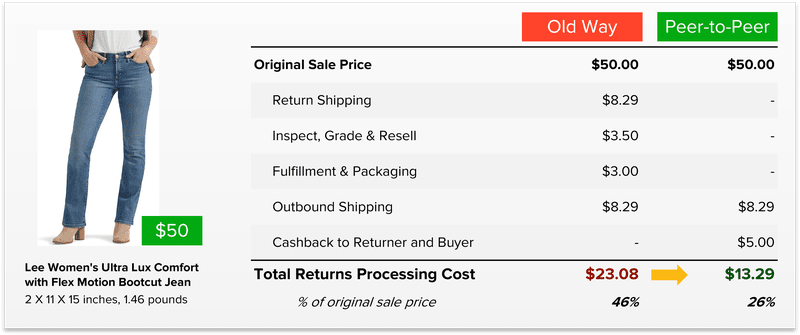Impact of Returns on Profitability: How Ecommerce Returns Impact Customer Lifetime Value (CLV)

Last updated on April 25, 2025

In this article
 9 minutes
9 minutes
Returns are an unavoidable part of the ecommerce experience. Whether due to incorrect sizing, a change of heart, or damaged products, returns are an integral aspect of the returns process. Establishing a robust returns process that includes clear and customer-friendly policies to accept returns is crucial; however, the impact of returns on profitability is often underestimated. Managing returns effectively is essential to mitigate additional costs incurred during the returns process, such as processing, restocking, and shipping. Ecommerce returns present unique challenges such as wardrobing, bracketing, and return fraud, which can significantly impact businesses economically and operationally.
In this article, we will explore how returns management directly affects CLV and profitability. We’ll dive into the costs associated with returns, the importance of managing returns effectively, and how optimizing the returns management process can improve both customer experience and profitability. Many businesses view returns management as essential for effective supply chain management. By adopting actionable strategies, ecommerce businesses can balance customer needs with profitability and turn returns into opportunities for growth.
Understanding Customer Lifetime Value (CLV)
Before we examine the impact of returns on CLV, it’s essential to understand what CLV is and why it’s critical for ecommerce businesses. Customer Lifetime Value represents the total revenue a customer is expected to generate for a business over the course of their relationship. Increasing CLV is a key goal for any ecommerce operation, as it’s more cost-effective to retain existing customers than acquire new ones.
CLV is influenced by several factors, including the frequency of customer purchases, average order value, and the length of the customer relationship. Customer loyalty plays a pivotal role in increasing CLV, which is why creating an excellent customer experience, including a smooth returns process, is crucial to long-term success. Understanding customer behavior can help improve the returns process and CLV by predicting trends and addressing issues proactively.
However, the returns process can either positively or negatively affect CLV, depending on how efficiently it’s managed. A seamless, customer-friendly returns system can boost customer satisfaction and loyalty, while a poor returns experience can damage trust and reduce the likelihood of repeat purchases. Ecommerce platforms play an increasingly important role in managing returns effectively, transforming returns management into a competitive advantage.
The Direct and Indirect Costs of Returns on Profitability
Returns have a significant impact on profitability and can quickly add up in terms of logistics costs, operational costs, and inventory management. While returns are inevitable in ecommerce, businesses must manage them carefully to minimize the financial and operational toll they take.
Direct Financial Impact of Returns
When a product is returned, there are several costs associated with processing it:
- Shipping costs: Returning products requires shipping, which can be expensive, especially when customers return items from faraway locations. While free returns can encourage customers to shop confidently, the associated shipping costs can eat into profits.
- Restocking fees and labor costs: After a returned item is received at the warehouse, businesses must inspect, restock, and repackage the product, which can result in additional labor costs. Furthermore, not all returned merchandise is in sellable condition, which could lead to lost revenue if items are damaged or have a limited shelf life. An efficient RMA process helps streamline operations, reduces errors, and enhances profitability by ensuring returned items are systematically inspected and categorized for resale or disposal.
- Inventory visibility: Returns can create challenges in inventory visibility and management, especially if returns aren’t processed in a timely manner. Poor inventory management can lead to overstocking or understocking, affecting the ability to fulfill future orders efficiently. Allowing returns at the store level can help reduce overall costs associated with processing returns and fulfillment, as it can redirect returned items for future orders without the need for centralized warehousing.
Indirect Costs of Returns on CLV
In addition to the direct costs associated with returns, there are several indirect impacts on CLV and profitability:
- Customer dissatisfaction: A cumbersome or confusing returns process can lead to negative customer experiences. Customers who face challenges in returning products are less likely to return for future purchases. Customer loyalty is diminished when customers feel their needs are not being prioritized.
- Fraudulent returns: Fraudulent ecommerce returns, such as return abuse or false claims about product defects, can add to the costs and erode profits. When businesses fail to monitor returns data properly, it increases the risk of fraudulent returns, which negatively impacts profit margins.
Pro Tip: By tracking returns data and implementing a comprehensive returns management system, ecommerce businesses can identify patterns in returns, minimize fraudulent returns, and improve the returns process, resulting in cost savings and increased customer satisfaction.
The Positive Impact of Returns on CLV
While returns are often viewed negatively, a well-managed returns process can significantly enhance customer loyalty and ultimately boost CLV. By viewing returns as opportunities rather than costs and leveraging technology, businesses can transform returns into assets, thereby improving profitability. An efficient returns management process doesn’t have to mean increased costs. In fact, it can lead to more satisfied customers who are likely to make repeat purchases. Implementing gift cards during the returns process can also help retain revenue while boosting customer satisfaction.
A Smooth Returns Process Builds Customer Trust
Offering a seamless returns experience helps establish customer trust. Customers who know they can easily return items without hassle are more likely to buy from the store again. A well-designed returns policy that is flexible and transparent gives customers the confidence to shop without fear of returning merchandise they might not want. Additionally, an optimized return process can enhance operational efficiency and minimize costs.
For instance, brands like Zappos have built an empire by offering free returns with no questions asked. This commitment to customer satisfaction is not only attractive to new customers but also helps retain loyal customers over the long term. Reducing the burden on store associates by implementing flexible fulfillment options can also enhance the returns process, benefiting both employees and customers.
Reducing Returns Improves Customer Satisfaction and Loyalty
By reducing returns, ecommerce businesses can significantly improve operational efficiency and profitability. Key strategies for minimizing returns include improving product quality, providing more detailed product descriptions, offering size recommendations, and using virtual try-ons for fashion items. When customers are better informed about what they’re purchasing, the likelihood of returns is reduced, resulting in a more positive customer experience and greater brand affinity. Additionally, some customers engage in “bracketing,” where they intentionally order multiple items in different sizes or colors with the plan to return some of them. Managing this behavior effectively is crucial to reducing returns and enhancing customer satisfaction.
Additionally, offering store credit instead of a refund for returns keeps customers engaged with the business and helps to ensure they make future purchases. This is particularly effective in boosting CLV, as it promotes ongoing transactions with the customer. Online orders tend to have higher return rates compared to in-store purchases, making effective returns management strategies essential to mitigate the impact on profitability and improve customer experiences.
Pro Tip: Ensure returns policies are clearly communicated and easy to navigate, creating a frictionless experience for customers. Offering flexible fulfillment options, such as in-store returns for online purchases, can also increase customer loyalty and encourage repeat sales.
Leveraging Technology to Manage Returns and Improve CLV
Technology is one of the most powerful tools in the modern ecommerce landscape, and it can play a pivotal role in optimizing the returns process and enhancing CLV. It plays a key role in maintaining low expenses and enhancing customer loyalty by streamlining the returns management process.
Returns Management Software
Using returns management software allows businesses to automate the returns process and gain inventory visibility across the board. Returns management software can streamline the return process, making it more efficient and user-friendly. A comprehensive returns management system can track returned products, analyze reasons for returns, and integrate seamlessly with supply chain operations. This reduces the risk of stockouts, improves order fulfillment, and increases customer satisfaction.
By utilizing technology to track returns data, ecommerce businesses can pinpoint trends (such as wrong items shipped or size mismatches) and address these issues proactively, leading to fewer returns and a better overall customer experience. Additionally, a comprehensive returns management process can enhance operational efficiency, minimize costs, and reduce environmental impact.
Pro Tip: Invest in returns management systems that offer data-driven insights, helping to refine the returns process and improve operational efficiency.
Summary: The Long-Term Impact of Returns on CLV and Profitability
Ecommerce returns are an inevitable part of the business, but they don’t have to negatively impact customer lifetime value (CLV) or profitability. A seamless and efficient returns process can enhance customer satisfaction, build customer loyalty, and ultimately maximize profitability. Managing retail returns effectively helps mitigate costs, improve customer relationships, and address environmental concerns.
By improving the returns management process, leveraging returns management systems, and offering customer-centric returns policies, ecommerce businesses can reduce operational costs and boost CLV. Additionally, implementing proactive strategies to minimize returns, such as improving product quality, providing accurate descriptions, and offering store credit, can help reduce the negative impact of returns on profit margins. Effective reverse logistics plays a significant role in reducing operational costs and boosting CLV by optimizing the process of handling returned items.
Adopting these strategies not only enhances the customer experience but also sets ecommerce businesses apart from competitors, giving them a competitive advantage in the ever-evolving online marketplace.
Frequently Asked Questions
How do returns impact customer lifetime value (CLV)?
Returns can negatively impact CLV if the returns process is cumbersome or inefficient, leading to customer dissatisfaction and lost sales. A seamless, customer-friendly returns process can enhance customer satisfaction and improve CLV by encouraging repeat purchases.
What are the key strategies for reducing returns in ecommerce?
Improving product quality, providing accurate product descriptions, using size recommendations, and leveraging virtual try-ons can significantly reduce return rates and enhance customer satisfaction.
How does returns management software improve CLV?
Returns management software streamlines the returns process, improves inventory visibility, and helps businesses manage returns more efficiently. It also provides valuable returns data that can be used to improve product offerings and customer experience, ultimately boosting CLV.
How can store credit help increase CLV?
Offering store credit instead of cash refunds keeps returned merchandise in circulation and encourages customers to make future purchases, leading to higher CLV and customer retention.
Why is a flexible returns policy important for ecommerce businesses?
A flexible returns policy builds customer trust and encourages loyalty. Customers are more likely to return to a brand that offers free returns and a simple, hassle-free returns experience, which helps retain customers and increase CLV.

Up to 64% Lower Returns Processing Cost


